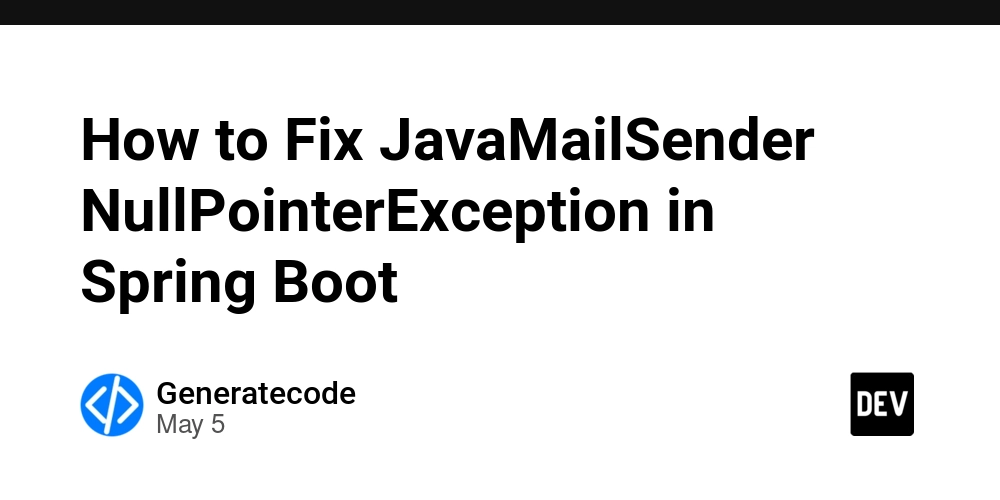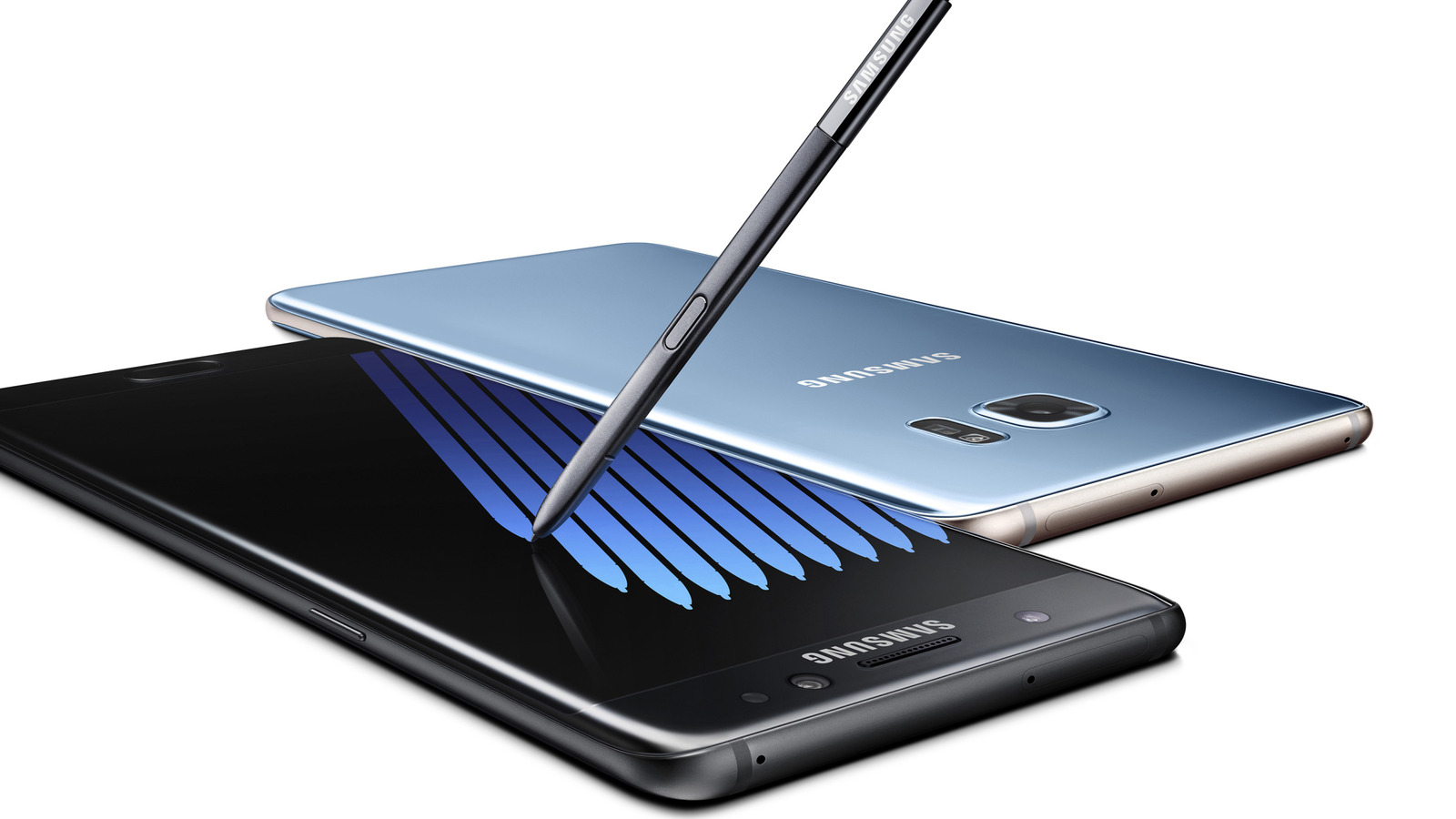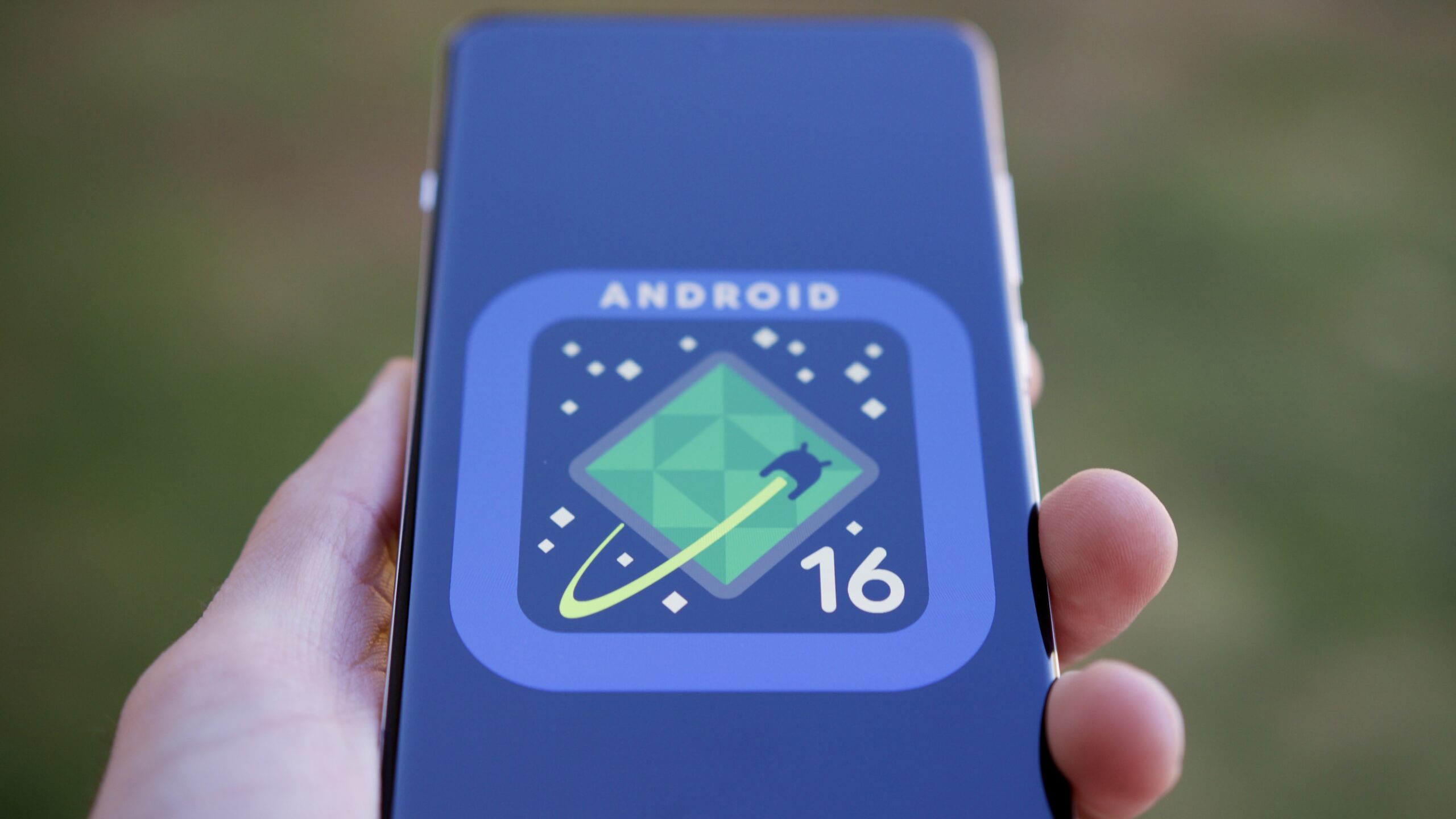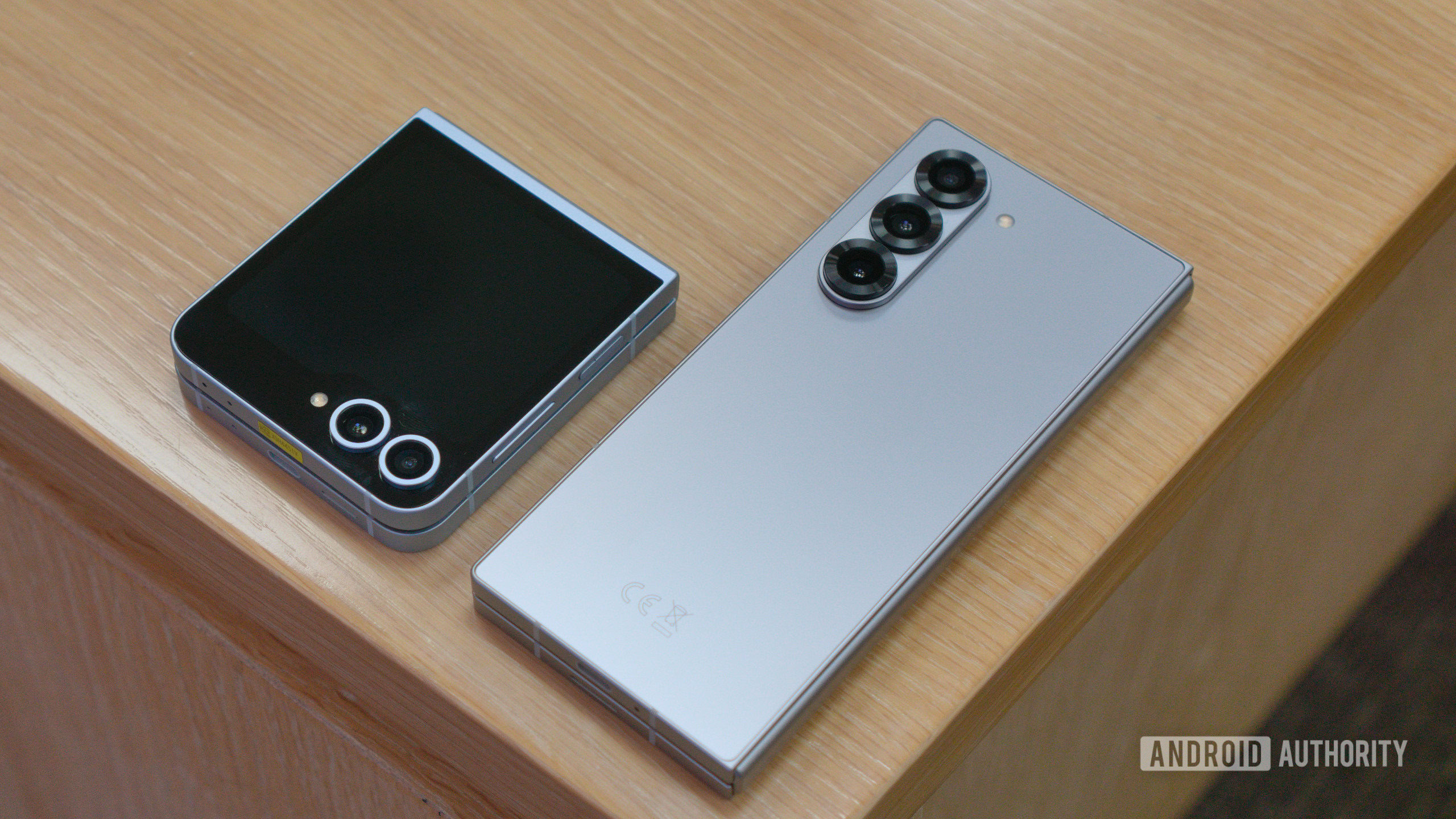How to Fix JavaMailSender NullPointerException in Spring Boot
Introduction Sending emails in Spring Boot is a common requirement, but it can be daunting if you encounter a NullPointerException. If you've set up your project and followed tutorials, you might still face issues, just like the error encountered by users new to Spring Boot. In this guide, we'll explore the common reasons behind this error and provide a clear, step-by-step solution. Why the NullPointerException Occurs The NullPointerException in your email sending function (sendEmail) arises when the mailSender bean is not properly initialized. This could happen for various reasons: Lack of Dependency Injection: If your EmailService instance isn't managed by Spring’s context (i.e., not instantiated via Spring), the mailSender won't be injected and will remain null. Configuration Issues: An incorrect configuration in your application.properties can prevent Spring from successfully creating the JavaMailSender bean. Step-by-step Solution To resolve the issue, let's ensure proper configuration and usage of the EmailService class. 1. Proper Dependency Injection Ensure that you are using Spring’s dependency injection properly when creating instances of your service class. Instead of manually instantiating EmailService, you should let Spring handle its instantiation. Here’s how you can do it correctly, optionally using JUnit and Spring's testing support: package maple.spring_servlet; import maple.spring_servlet.service.EmailService; import org.junit.jupiter.api.Test; import org.mockito.InjectMocks; import org.mockito.MockitoAnnotations; import org.springframework.beans.factory.annotation.Autowired; import org.springframework.boot.test.context.SpringBootTest; import org.springframework.mail.javamail.JavaMailSender; import org.springframework.test.context.junit.jupiter.SpringExtension; import org.junit.jupiter.api.BeforeEach; import org.junit.jupiter.api.extension.ExtendWith; @ExtendWith(SpringExtension.class) @SpringBootTest public class EmailServiceTest { @Autowired private EmailService emailService; @BeforeEach public void setUp() { MockitoAnnotations.openMocks(this); } @Test public void testSendEmail() { String to = "recipient@domain.com"; String subject = "Test Subject"; String body = "Test Body"; emailService.sendEmail(to, subject, body); } } In the above test, we use the @SpringBootTest annotation, which tells Spring to create the application context and auto-wire the EmailService instance correctly, resolving the NullPointerException since mailSender will be properly injected. 2. Verify Your Configuration Next, double-check your application.properties for errors. Your configuration settings should look like this: spring.mail.host=smtp.gmail.com spring.mail.port=587 spring.mail.username=your_email@gmail.com spring.mail.password=your_app_password spring.mail.properties.mail.smtp.auth=true spring.mail.properties.mail.smtp.starttls.enable=true Ensure that you replace your_email@gmail.com and your_app_password with actual credentials. If you are using Gmail, ensure that you have allowed access to less secure apps or generated an app password if you have 2FA enabled. 3. Testing Your Email Sending Logic Once you have ensured that your application context loads correctly and the EmailService is enabled, you can further enhance your tests: Mocking the JavaMailSender: You may want to mock the JavaMailSender in your tests to ensure that no real emails are sent during the testing phase. Asserting the Email Sent: Use assertions to ensure that send has been called on your mailSender mock, confirming the email sending logic works as intended. Here’s an example of how to mock and verify: import static org.mockito.Mockito.verify; import static org.mockito.Mockito.times; import org.mockito.Mock; import org.springframework.boot.test.mock.mockito.MockBean; @MockBean JavaMailSender mailSender; @Test public void testSendEmail() { String to = "recipient@domain.com"; String subject = "Test Subject"; String body = "Test Body"; emailService.sendEmail(to, subject, body); verify(mailSender, times(1)).send(any(SimpleMailMessage.class)); } Frequently Asked Questions Q1: Why is my email not sending even with correct configuration? A1: Check that your SMTP server allows applications to send emails. For Gmail, make sure you have configured app passwords properly if 2FA is on. Q2: What if my email service is blocked? A2: Some email services block less secure apps. Check your email settings to ensure that your application is authorized. Conclusion In summary, resolving the NullPointerException with JavaMailSender in Spring Boot centers around proper dependency management and configuration. By allowing Spring to manage your service injections and ensuring your properties are correctly configured, you can efficiently send emails without encountering null references. Don't hesitate to enhance your tests for

Introduction
Sending emails in Spring Boot is a common requirement, but it can be daunting if you encounter a NullPointerException. If you've set up your project and followed tutorials, you might still face issues, just like the error encountered by users new to Spring Boot. In this guide, we'll explore the common reasons behind this error and provide a clear, step-by-step solution.
Why the NullPointerException Occurs
The NullPointerException in your email sending function (sendEmail) arises when the mailSender bean is not properly initialized. This could happen for various reasons:
-
Lack of Dependency Injection: If your
EmailServiceinstance isn't managed by Spring’s context (i.e., not instantiated via Spring), themailSenderwon't be injected and will remainnull. -
Configuration Issues: An incorrect configuration in your
application.propertiescan prevent Spring from successfully creating theJavaMailSenderbean.
Step-by-step Solution
To resolve the issue, let's ensure proper configuration and usage of the EmailService class.
1. Proper Dependency Injection
Ensure that you are using Spring’s dependency injection properly when creating instances of your service class. Instead of manually instantiating EmailService, you should let Spring handle its instantiation.
Here’s how you can do it correctly, optionally using JUnit and Spring's testing support:
package maple.spring_servlet;
import maple.spring_servlet.service.EmailService;
import org.junit.jupiter.api.Test;
import org.mockito.InjectMocks;
import org.mockito.MockitoAnnotations;
import org.springframework.beans.factory.annotation.Autowired;
import org.springframework.boot.test.context.SpringBootTest;
import org.springframework.mail.javamail.JavaMailSender;
import org.springframework.test.context.junit.jupiter.SpringExtension;
import org.junit.jupiter.api.BeforeEach;
import org.junit.jupiter.api.extension.ExtendWith;
@ExtendWith(SpringExtension.class)
@SpringBootTest
public class EmailServiceTest {
@Autowired
private EmailService emailService;
@BeforeEach
public void setUp() {
MockitoAnnotations.openMocks(this);
}
@Test
public void testSendEmail() {
String to = "recipient@domain.com";
String subject = "Test Subject";
String body = "Test Body";
emailService.sendEmail(to, subject, body);
}
}
In the above test, we use the @SpringBootTest annotation, which tells Spring to create the application context and auto-wire the EmailService instance correctly, resolving the NullPointerException since mailSender will be properly injected.
2. Verify Your Configuration
Next, double-check your application.properties for errors. Your configuration settings should look like this:
spring.mail.host=smtp.gmail.com
spring.mail.port=587
spring.mail.username=your_email@gmail.com
spring.mail.password=your_app_password
spring.mail.properties.mail.smtp.auth=true
spring.mail.properties.mail.smtp.starttls.enable=true
- Ensure that you replace
your_email@gmail.comandyour_app_passwordwith actual credentials. If you are using Gmail, ensure that you have allowed access to less secure apps or generated an app password if you have 2FA enabled.
3. Testing Your Email Sending Logic
Once you have ensured that your application context loads correctly and the EmailService is enabled, you can further enhance your tests:
-
Mocking the JavaMailSender: You may want to mock the
JavaMailSenderin your tests to ensure that no real emails are sent during the testing phase. -
Asserting the Email Sent: Use assertions to ensure that
sendhas been called on yourmailSendermock, confirming the email sending logic works as intended.
Here’s an example of how to mock and verify:
import static org.mockito.Mockito.verify;
import static org.mockito.Mockito.times;
import org.mockito.Mock;
import org.springframework.boot.test.mock.mockito.MockBean;
@MockBean
JavaMailSender mailSender;
@Test
public void testSendEmail() {
String to = "recipient@domain.com";
String subject = "Test Subject";
String body = "Test Body";
emailService.sendEmail(to, subject, body);
verify(mailSender, times(1)).send(any(SimpleMailMessage.class));
}
Frequently Asked Questions
Q1: Why is my email not sending even with correct configuration?
A1: Check that your SMTP server allows applications to send emails. For Gmail, make sure you have configured app passwords properly if 2FA is on.
Q2: What if my email service is blocked?
A2: Some email services block less secure apps. Check your email settings to ensure that your application is authorized.
Conclusion
In summary, resolving the NullPointerException with JavaMailSender in Spring Boot centers around proper dependency management and configuration. By allowing Spring to manage your service injections and ensuring your properties are correctly configured, you can efficiently send emails without encountering null references. Don't hesitate to enhance your tests for better reliability and insights into your email sending functionality.






































































































































































![[The AI Show Episode 145]: OpenAI Releases o3 and o4-mini, AI Is Causing “Quiet Layoffs,” Executive Order on Youth AI Education & GPT-4o’s Controversial Update](https://www.marketingaiinstitute.com/hubfs/ep%20145%20cover.png)




















































































































































































































































































































































































![Apple Shares Official Teaser for 'Highest 2 Lowest' Starring Denzel Washington [Video]](https://www.iclarified.com/images/news/97221/97221/97221-640.jpg)

![Under-Display Face ID Coming to iPhone 18 Pro and Pro Max [Rumor]](https://www.iclarified.com/images/news/97215/97215/97215-640.jpg)
![New Powerbeats Pro 2 Wireless Earbuds On Sale for $199.95 [Lowest Price Ever]](https://www.iclarified.com/images/news/97217/97217/97217-640.jpg)








































































































